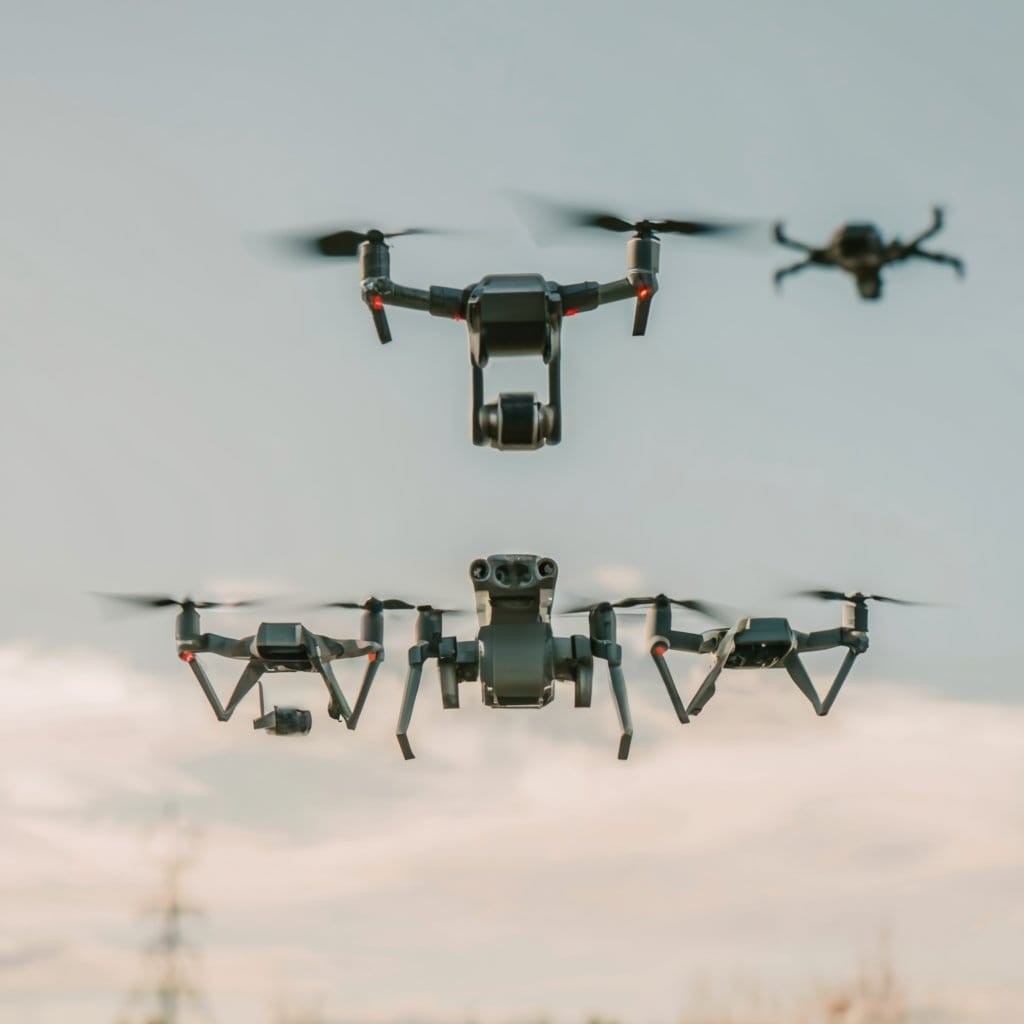Drones have revolutionized various industries, from photography and filmmaking to agriculture and surveillance. A critical factor in a drone’s versatility and effectiveness is its flight time. The longer a drone can stay airborne, the more ground it can cover, the more data it can collect, and the more tasks it can perform. This blog post identifies the longest drone flight time, exploring specific models that excel in this area, the technology behind their endurance, and how to maximize their potential.
Drones with Longest Battery Life: Notable Models
The quest for extended flight time has led to the development of several impressive drone models. Here are some that have made significant strides in maximizing this capability:
- JOUAV CW-30E: This industrial-grade VTOL drone boasts an impressive flight time of up to 480 minutes (8 hours) due to its hybrid power system. It’s designed for long-range surveillance, mapping, and inspection missions.
- Autel EVO Max Series: Autel drones, particularly the EVO Max series, are known for their competitive flight times, often exceeding 40 minutes. They strike a good balance between flight time, camera quality, and portability.
- DJI Matrice 300 RTK: While not the absolute longest, the DJI Matrice 300 RTK is a professional workhorse with a flight time of up to 55 minutes. Its robust design and advanced features make it a popular choice for demanding commercial applications.
- DJI Mini 4 Pro: For a compact and lightweight option, the DJI Mini 4 Pro offers a surprisingly long flight time of up to 45 minutes with the Plus battery. This makes it an excellent choice for hobbyists and travelers who prioritize portability and endurance.
- Bwine F7 GB2: This drone offers a long flight time of 75 minutes. It is equipped with a 4K camera and a 3-axis gimbal.
These models showcase the diverse approaches manufacturers are taking to achieve longer flight times, from advanced battery technology to innovative power systems.

Factors Affecting Longest Drone Flight Time
Several factors influence how long a drone can stay in the air. Understanding these elements is crucial for anyone looking to purchase or operate drones for extended periods.
Drone Battery Technology and Capacity
The heart of any drone’s flight time is its battery.
- Capacity (mAh): Measured in milliampere-hours (mAh), capacity indicates how much electrical charge a battery can store. A higher mAh rating generally translates to longer flight times. For instance, a drone with a 10,000 mAh battery will generally fly longer than one with a 5,000 mAh battery, assuming other factors are equal.
- Voltage: The electrical potential difference, measured in volts (V), affects the drone’s power output and efficiency. Higher voltage can enable the drone’s motors to operate more efficiently, potentially increasing flight time.
- Battery Chemistry: Lithium Polymer (LiPo) batteries have been the standard for drones due to their high energy density and relatively light weight. However, newer technologies like solid-state batteries are emerging, promising even greater energy density, safety, and faster charging capabilities. The future of drone flight time is closely tied to advancements in battery chemistry.
Drone Weight and Design
A drone’s weight significantly impacts its flight time.
- Payload: The weight of any additional equipment the drone carries, such as cameras, sensors, or delivery packages, reduces flight time. It’s a balancing act: a high-quality camera might enhance a drone’s capabilities, but it also demands more power.
- Aerodynamics: A streamlined design minimizes drag, allowing the drone to fly more efficiently and consume less power. Think of it like how a sleek sports car is more fuel-efficient than a boxy truck.
- Material Science: Lightweight yet strong materials like carbon fiber are used to construct drone frames, reducing overall weight without compromising structural integrity. These materials allow drones to carry more weight.
Environmental Conditions
The environment in which a drone operates also plays a role in its flight time.
- Wind Speed: Strong winds increase drag and require the drone to use more power to maintain its position and course. This is one of the most significant real-world factors affecting flight time.
- Temperature: Extreme temperatures can affect battery performance. Cold temperatures reduce battery capacity, while high temperatures can lead to overheating and reduced efficiency. Drone pilots often need to pre-heat their batteries in cold climates.
- Air Density: Higher altitudes mean thinner air, which can affect the efficiency of the drone’s propellers and overall power consumption. Drones may need larger propellers to compensate.
Advanced Battery Technologies for Extended Drone Flights
Advancements in battery technology are constantly pushing the boundaries of drone flight time.
Lithium Polymer (LiPo) Batteries
LiPo batteries offer a good balance of energy density, weight, and discharge rate, making them suitable for most consumer and professional drones. Ongoing improvements in LiPo technology focus on increasing energy density and cycle life. Manufacturers are also working on improving their thermal management.
Solid-State Batteries
Solid-state batteries are a promising alternative to LiPo batteries. They replace the liquid electrolyte with a solid material, offering several advantages:
- Higher Energy Density: Solid-state batteries can store more energy for a given weight, leading to longer flight times. This could potentially double or even triple the flight time of future drones.
- Improved Safety: They are less prone to overheating and catching fire compared to LiPo batteries, making them a safer option for both the drone and its surroundings.
- Faster Charging: Solid-state batteries can often be charged more quickly, reducing downtime between flights.
Hybrid Power Systems
Some drones utilize hybrid power systems that combine batteries with other energy sources, such as:
- Fuel Cells: Hydrogen fuel cells convert chemical energy into electricity, offering significantly longer flight times than batteries alone. While still in development, hydrogen fuel cell-powered drones are showing great potential for long-endurance missions.
- Gasoline Engines: Internal combustion engines can power larger drones for very long durations, but they are typically heavier and more complex. These are often used in specialized industrial applications.
Comparing Flight Times of Top Drone Models
The flight time of drones varies widely depending on their type, size, and intended use.
Consumer Drones
Consumer drones, typically used for photography, videography, and recreational purposes, generally offer flight times ranging from 20 to 40 minutes. Models with longer flight times often feature larger batteries and efficient designs.
Professional Drones
Professional drones, used for applications like surveying, inspection, and agriculture, often require longer flight times to cover larger areas. These drones may utilize larger batteries or hybrid power systems to achieve flight times of 1 hour or more.
Industrial and Commercial Drones
Industrial and commercial drones, designed for specialized tasks like long-range inspections, surveillance, and delivery, often prioritize maximum flight time. Some of these drones can stay airborne for several hours, thanks to advanced battery technology or hybrid power systems.
How to Increase Drone Flight Time: Tips and Tricks
While drone manufacturers are constantly improving flight times, drone operators can also take steps to maximize the endurance of their aircraft.
Drone Battery Maintenance for Optimal Performance
Proper battery care is essential for maintaining optimal performance and extending flight time.
- Storage: Store batteries in a cool, dry place, away from extreme temperatures. Extreme heat or cold can degrade battery performance over time.
- Charging: Use a compatible charger and avoid overcharging or undercharging. A smart charger that automatically stops charging when the battery is full is highly recommended.
- Discharge: Avoid deep discharges, as they can damage LiPo batteries. It’s generally best to recharge a LiPo battery when it has around 20-30% charge remaining.
- Regular Checks: Inspect batteries for damage or swelling, and replace them if necessary. A swollen battery is a sign of a problem and should not be used.
Extending Flight Time Through Efficient Flying Techniques
Flying techniques can significantly impact a drone’s flight time.
- Smooth Movements: Avoid aggressive maneuvers and sudden changes in speed or direction, as they consume more power. Gentle, gradual movements are much more energy-efficient.
- Optimal Speed: Fly at a moderate speed, as very slow or very fast speeds can reduce efficiency. There’s often a sweet spot where the drone is most efficient.
- Altitude: Fly at an optimal altitude. Higher altitudes can sometimes be more efficient due to less air resistance, but this depends on the specific drone and conditions.
- Minimize Hovering: Hovering consumes a significant amount of power, so minimize it whenever possible. If you need to maintain a position, try to do so with minimal movement.
Maximizing Drone Battery Life in Different Conditions
Adapting to different environmental conditions can help maximize flight time.
- Wind: Fly with the wind when possible, and avoid flying in strong headwinds. If you must fly in windy conditions, be prepared for a shorter flight time.
- Temperature: Keep batteries warm in cold conditions and avoid overheating in hot conditions. Consider using battery warmers in cold weather.
- Weather: Avoid flying in rain or snow, as these conditions can increase drag and power consumption. Moisture can also damage the drone’s electronics.
Applications of Long Flight Time Drones
Drones with extended flight times offer numerous advantages across various applications.
Drones with Longest Flight Time for Inspection and Surveying
Long flight times enable drones to cover larger areas and conduct more thorough inspections of infrastructure, such as pipelines, power lines, and bridges. This reduces the need for multiple flights and saves time and resources.
Long-Endurance Drones for Search and Rescue Operations
In search and rescue missions, long flight time is crucial for covering vast areas and locating missing persons or objects. Drones can be equipped with thermal imaging cameras to aid in nighttime searches.
Using Drones with Extended Battery Life in Agriculture
Drones with long flight times can be used to monitor crops over large fields, gather data on plant health, and apply treatments more efficiently. This can lead to increased yields and reduced costs for farmers.
The Future of Drone Flight Time
The quest for longer drone flight times is ongoing. Researchers and manufacturers are exploring innovative solutions such as:
- Advanced Battery Management Systems (BMS): These systems optimize battery performance in real-time, maximizing efficiency and extending flight time.
- Energy Harvesting: Technologies like solar panels integrated into the drone’s wings or body could supplement battery power and extend flight time.
- Wireless Charging: The ability to charge drones wirelessly while they are perched on a charging station could enable continuous operation for certain applications.
Conclusion
As battery technology continues to advance, drones with even longer flight times will become increasingly common. This will open up new possibilities for drone applications and further enhance their value in various industries. From consumer photography to industrial inspections, the ability to stay airborne longer translates to increased efficiency, productivity, and mission success. Whether you are a hobbyist or a professional, understanding the drones that excel in this area, the factors that affect drone flight time and how to maximize it is essential for getting the most out of your drone.



